

Craig Dwyer sur Twitter : "Purpose. Reflection. #inquiry... Stories: Behind the News. MRsalakas : Here is an @edutopia quote ... Introducing 20 Time to Your Class - 20-Time In Education Inspire. Create. Innovate. Use this page for reference when you announce the project and during the first week of implementation.

Announcement Day: Get students more comfortable with inquiry-based lessons by requiring that they figure out what 20 Time is. Give them about 10-15 minutes to Google "20% Project" and only tell them that you'll be doing it in class.After 10-15 minutes, answer a few questions and then put the following "rules" up for them to discuss with you. Please feel free to change/adapt as necessary. These are rules that Kevin Brookhauser, Troy Cockrum, and Kate Petty have worked with and adapted as necessary.You will spend 20% of our class time, or every Friday, working on what we'll call 20 Time.You may work alone or with a small group.Decide carefully.
Announcement Evening: Send a quick email home to parents that explains what the project is and ask them to help their son/daughter brainstorm for ideas. Rest of the Week: Why Do Things Have To Die? Why do things have to die?

What a great question that has been asked by many of our Wonder Friends. Www.nbexcellence.org/cms_files/resources/Research Template Grades 4-6 Seperate Rubrics.pdf. Genius Hour - Where Passions Come Alive. To Foster Productivity and Creativity in Class, Ditch the Desks! By Leslie Harris O’Hanlon When elementary school teacher Erin Klein sat in one of her students’ desks last year, she noticed a few things about her classroom space.
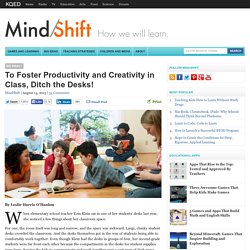
For one, the room itself was long and narrow, and the space was awkward. Large, clunky student desks crowded the classroom. And the desks themselves got in the way of students being able to comfortably work together. Even though Klein had the desks in groups of four, her second-grade students were far from each other because the compartments in the desks for student supplies were large, forcing the kids to communicate and work together over a vast span of desk space. CyberGuide for Content - FINAL.PDF.
Abc2013. Internet Catalogue.
Passion Projects / Genius Hour. Formative Assessments Are Easier Than You Think! When I was teaching science one of the best lessons I learned was about formative assessment.
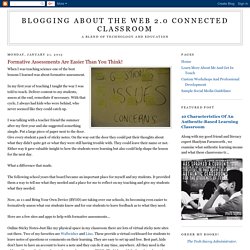
In my first year of teaching I taught the way I was told to teach. Deliver content to my students, assess at the end, remediate if necessary. With that cycle, I always had kids who were behind, who never seemed like they could catch up. I was talking with a teacher friend the summer after my first year and she suggested something simple. Put a large piece of paper next to the door. 5 Learning Strategies That Make Students Curious. 5 Learning Strategies That Make Students Curious by Terry Heick Note this post has been updated from original publishing in February of 2013 Understanding where curiosity comes from is the holy grail of education.
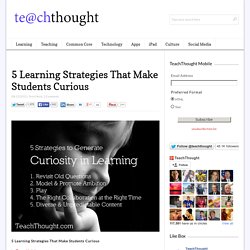
Elementary Research Rubric. Should I teach problem-, project-, or inquiry-based learning? SmartBlogs. Questioning Toolkit. Essential Questions These are questions which touch our hearts and souls.
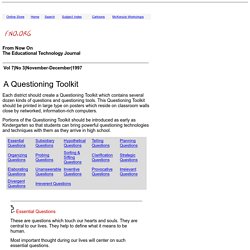
They are central to our lives. They help to define what it means to be human. Most important thought during our lives will center on such essential questions. Home. How Children Learn: A World Tour of Class Portraits - Maria Popova. A lens on the environments in which we educate the generations around the globe.
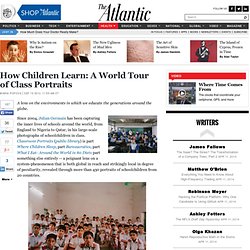
Since 2004, Julian Germain has been capturing the inner lives of schools around the world, from England to Nigeria to Qatar, in his large-scale photographs of schoolchildren in class. Classroom Portraits (public library) is part Where Children Sleep, part Bureaucratics, part What I Eat: Around the World in 80 Diets part something else entirely -- a poignant lens on a system-phenomenon that is both global in reach and strikingly local in degree of peculiarity, revealed through more than 450 portraits of schoolchildren from 20 countries. Progression in Creativity: developing new forms of assessment. Posted on 24 Apr, 2012 Authors: Ellen Spencer, Bill Lucas and Guy Claxton Institution: Centre for Real World Learning, University of Winchester Full reference: Spencer, E., Lucas, B. and Claxton, G. (2012).
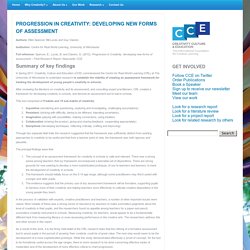
Progression in Creativity: developing new forms of assessment – Final Research Report. Authentic Inquiry Maths. Ten Takeaway Tips for Teaching Critical Thinking. Suggestions from educators at KIPP King Collegiate High School on how to help develop and assess critical-thinking skills in your students.
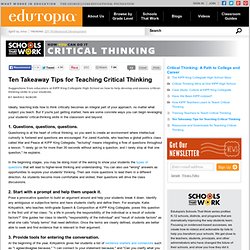
Ideally, teaching kids how to think critically becomes an integral part of your approach, no matter what subject you teach. But if you're just getting started, here are some concrete ways you can begin leveraging your students' critical-thinking skills in the classroom and beyond. Enhancing Education: The 5 E's. The 5 E's is an instructional model based on the constructivist approach to learning, which says that learners build or construct new ideas on top of their old ideas.

The 5 E's can be used with students of all ages, including adults. Each of the 5 E's describes a phase of learning, and each phase begins with the letter "E": Engage, Explore, Explain, Elaborate, and Evaluate. The 5 E's allows students and teachers to experience common activities, to use and build on prior knowledge and experience, to construct meaning, and to continually assess their understanding of a concept. Infoprocesscycle. NSW Government Education and Communities Sites2See - Web 2.0 tools in the information skills process.